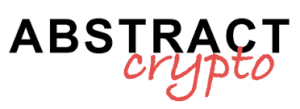The curtain has risen on one of the most anticipated legal battles in the world of cryptocurrencies: Craig Wright, an Australian computer scientist, is facing the accusation of industrial-scale forgery of his claim to be the elusive creator of Bitcoin, Satoshi Nakamoto.
The first day of the trial, held in a high court of the United Kingdom, saw a flurry of accusations and counter-arguments that shed light on the complexity of the case.
Craig Wright accused: the Crypto Open Patent Alliance (COPA) challenges him to prove his identity as Satoshi Nakamoto
Wright, standing firm in his claim to be Satoshi Nakamoto, has been involved in legal disputes with various members of the cryptographic community, accusing them of copyright violations related to the Bitcoin white paper, a fundamental document in the world of cryptocurrencies.
The Crypto Open Patent Alliance (COPA), supported by important figures in the industry such as Jack Dorsey and Coinbase, has now taken the courageous step of challenging Wright in court, with the aim of putting an end to what it considers his bullying tactics within the Bitcoin community.
At the center of the COPA case are the accusations of forgery against Wright. The alliance argues that the evidence presented by Wright in support of his claims is fraudulent, constituting a “blatant lie” and “an elaborate false narrative”.
The drama in the courtroom unfolded while COPA’s lawyers were discussing with Wright’s lawyers about the authenticity of the documents and the credibility of his statements.
Despite the exhaustive efforts of COPA to dismantle Wright’s case, his defense has mounted a solid counterargument.
Lord Anthony Grabiner, representing Wright, emphasized the lack of direct evidence refuting Wright’s claim to be Satoshi Nakamoto.
Grabiner has emphasized that no other individual has definitively emerged as Satoshi, positioning Wright as a plausible candidate by default.
The defense strategy has also tried to leverage Wright’s educational and professional background as evidence of his ability to conceive a revolutionary innovation like Bitcoin.
However, the COPA has remained steadfast, stating that its goal is not to unmask the true Satoshi, but to unequivocally refute Wright’s claims.
The legal proceeding highlighted the high stakes of the trial
The legal saga resembled a modern adaptation of “Hamlet”, with Wright in the role of the enigmatic prince whose true identity is in balance. However, unlike the classic play, the resolution of this legal saga has significant implications for the future of Bitcoin and its community.
At the end of the process, Judge James Mellor granted Wright permission to introduce new evidence, subject to expert review and cross-examination by COPA. The decision sets the stage for further revelations and clashes in the days to come, promising a gripping legal spectacle that could reshape the cryptocurrency landscape.
In perspective, the outcome of the process remains uncertain, with both parties ready for a long legal battle. Wright’s testimony and cross-examination, scheduled for the next few days, will likely be a crucial moment in determining the credibility of his claims.
For the COPA, the victory would represent a triumph of justice and a resounding reproach to those who consider Wright’s attempts to exert undue influence within the Bitcoin community.
Regardless of the outcome of the trial, its reverberations are destined to resonate far beyond the boundaries of the courtroom.
The case embodies the collision between innovation and litigation in the rapidly evolving world of cryptocurrencies, highlighting the need for solid legal frameworks to resolve disputes and safeguard the integrity of transformative technologies like Bitcoin.
When the trial resumes, all eyes remain fixed on the drama unfolding, awaiting the final act of the saga of Craig Wright who claims to be Satoshi Nakamoto.
Conclusions
In conclusion, the opening day of Craig Wright’s trial, with his accusations of “industrial-scale” forgeries and passionate legal arguments, sets the stage for a thrilling legal showdown with significant ramifications for the cryptocurrency community.
The clash between Wright and the Crypto Open Patent Alliance encapsulates the broader tensions surrounding innovation, identity, and authority in the realm of Bitcoin.
During the course of the process, the credibility of Wright’s claim to be Satoshi Nakamoto is hanging in the balance, while COPA’s search for truth and justice unfolds on the legal battlefield.
The outcome of this high-stakes clash will not only determine the fate of the people involved, but it could also influence the trajectory of Bitcoin and its community.
Beyond the judicial drama, the trial serves to remind us of the importance of transparency, responsibility, and integrity in the development and adoption of transformative technologies.
Regardless of the verdict, the trial highlights the need for a solid legal framework to resolve disputes and safeguard the ethics of decentralization on which Bitcoin was founded.
While spectators await the next chapter of this thrilling saga, one thing remains certain: the reverberation of the trial will echo throughout the world of cryptocurrencies, leaving an indelible mark on its evolution and shaping its future trajectory.


